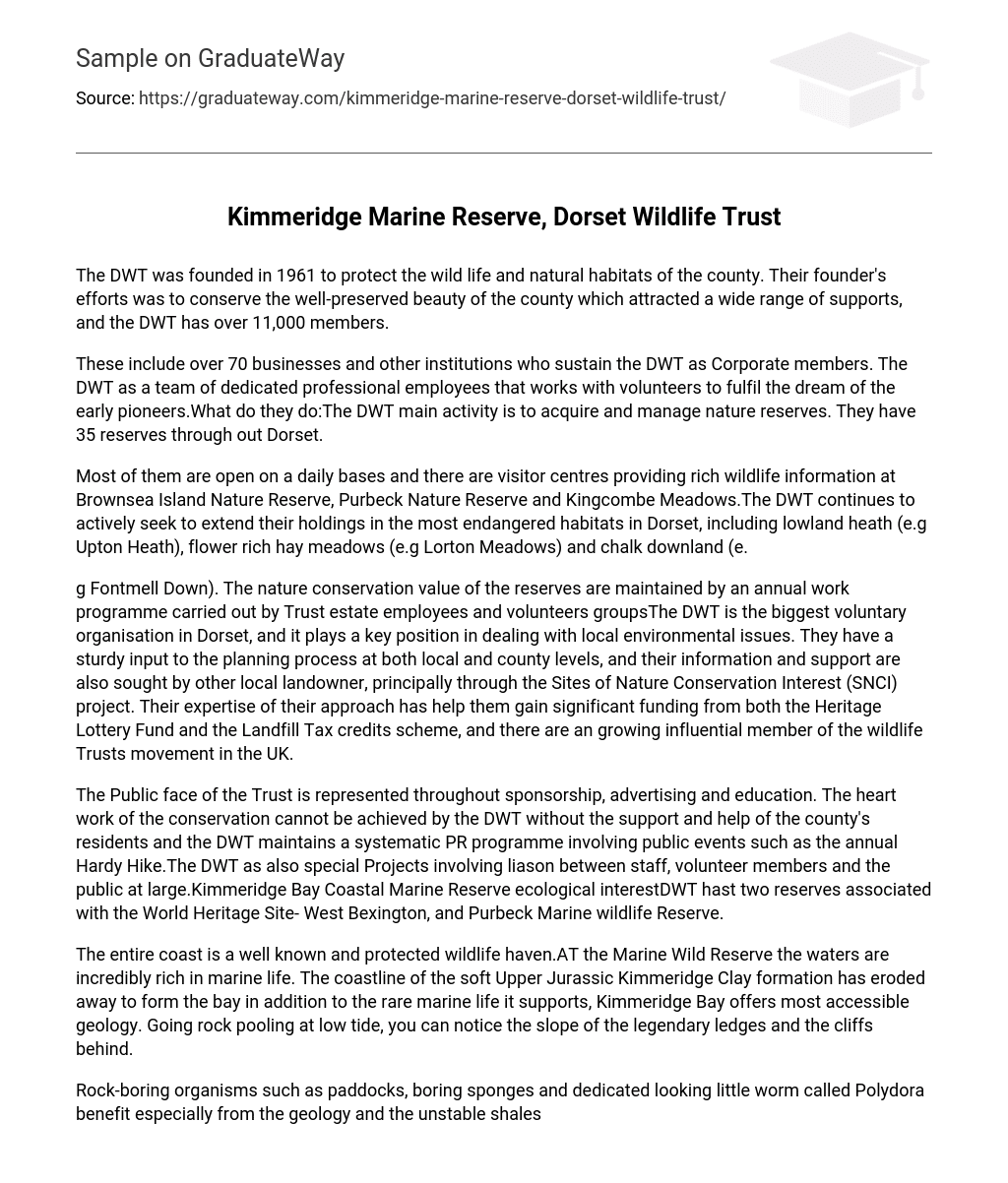The DWT was founded in 1961 to protect the wild life and natural habitats of the county. Their founder’s efforts was to conserve the well-preserved beauty of the county which attracted a wide range of supports, and the DWT has over 11,000 members.
These include over 70 businesses and other institutions who sustain the DWT as Corporate members. The DWT as a team of dedicated professional employees that works with volunteers to fulfil the dream of the early pioneers.What do they do:The DWT main activity is to acquire and manage nature reserves. They have 35 reserves through out Dorset.
Most of them are open on a daily bases and there are visitor centres providing rich wildlife information at Brownsea Island Nature Reserve, Purbeck Nature Reserve and Kingcombe Meadows.The DWT continues to actively seek to extend their holdings in the most endangered habitats in Dorset, including lowland heath (e.g Upton Heath), flower rich hay meadows (e.g Lorton Meadows) and chalk downland (e.
g Fontmell Down). The nature conservation value of the reserves are maintained by an annual work programme carried out by Trust estate employees and volunteers groupsThe DWT is the biggest voluntary organisation in Dorset, and it plays a key position in dealing with local environmental issues. They have a sturdy input to the planning process at both local and county levels, and their information and support are also sought by other local landowner, principally through the Sites of Nature Conservation Interest (SNCI) project. Their expertise of their approach has help them gain significant funding from both the Heritage Lottery Fund and the Landfill Tax credits scheme, and there are an growing influential member of the wildlife Trusts movement in the UK.
The Public face of the Trust is represented throughout sponsorship, advertising and education. The heart work of the conservation cannot be achieved by the DWT without the support and help of the county’s residents and the DWT maintains a systematic PR programme involving public events such as the annual Hardy Hike.The DWT as also special Projects involving liason between staff, volunteer members and the public at large.Kimmeridge Bay Coastal Marine Reserve ecological interestDWT hast two reserves associated with the World Heritage Site- West Bexington, and Purbeck Marine wildlife Reserve.
The entire coast is a well known and protected wildlife haven.AT the Marine Wild Reserve the waters are incredibly rich in marine life. The coastline of the soft Upper Jurassic Kimmeridge Clay formation has eroded away to form the bay in addition to the rare marine life it supports, Kimmeridge Bay offers most accessible geology. Going rock pooling at low tide, you can notice the slope of the legendary ledges and the cliffs behind.
Rock-boring organisms such as paddocks, boring sponges and dedicated looking little worm called Polydora benefit especially from the geology and the unstable shales prevent the development of dense kelp canopy in Kimmeridge Bay. This results in open very open underwater scenery -ideal for snorkelling.The richly organic mudrock has produced incredible assemblage of Late Jurassic fossil fauna, including crocodilians, plesiosaurs and ichthysaurs.The site is an excellent place to explore the geology of the Upper Jurassic Group, while at the same time enjoying spectacular array of wildlife.Species of interest include the rare early gentian, bee and pyramidal orchid.





